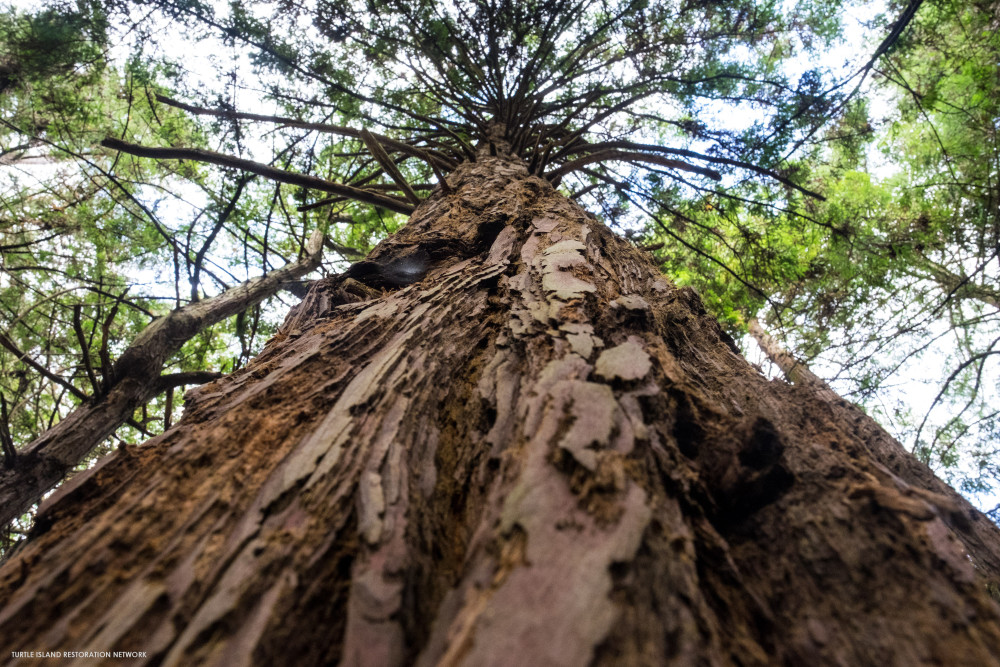First off, what do forests and oceans have to do with each other?
When we burn fossil fuels, the oceans take a big hit from our actions, absorbing roughly one-third of that additional carbon dioxide. This process ends up making the seas more acidic, reducing the ability of reef-building corals, crucial habitat for many marine species that we’re trying to protect.
Forests play a major role in reducing the negative effects of ocean acidification, by absorbing and tying up carbon. Trees absorb carbon dioxide (CO2) and release oxygen through photosynthesis. They transfer the carbon part of the CO2 equation to their trunks, limbs, roots, and leaves as they grow.
Located just north of San Francisco, four-inch tall redwood seedlings are transplanted from small, narrow pots, into gallon-size deep pots. These trees grow in Turtle Island Restoration Network’s native plant nursery and will eventually fight climate change and protect an endangered species. The redwoods are planted under the 10,000 Redwoods Project, which helps individuals, schools and businesses directly engage in the climate change challenge through the simple act of planting trees to sequester carbon. Our goal is to plant 10,000 redwoods to create a local carbon sink.
Redwoods are important trees. They shade the creeks and streams of Marin County in California where endangered coho salmon are clinging to life in the urban fringes of the Bay Area. They protect streambanks from erosion, and create complex habitat in the form of log “jams” that coho salmon and other wildlife depend on. Redwoods also store carbon, seemingly tremendous amounts of carbon.
CO2 is increasing the Earth’s average temperature and warming the planet. A warmer planet means more intense rainfall, more floods and droughts, ocean acidification, and sea level rise. Redwoods however, are an incredible carbon “sink”. They store more above and below ground carbon than any other terrestrial tree on Earth.
Carbon is stored in all parts of a redwood tree, including the roots, bark, branches, and growing tissue, but most of all in the dense inner layers of the trunk, also known as “heartwood”. Year after year, mature redwoods pack on the pounds, storing more and more carbon. As the tree gets older, that layer becomes dense and entombed within the tree, locking up the atmospheric carbon in rigid cells. That carbon is only released when the wood decomposes or burns. Luckily, redwoods are incredibly resistant to rot, fire, and insects, making them perfectly equipped at storing carbon and holding onto it for centuries.
According to foresters, the old-growth redwood forests of Northern California can store on average 48 tons of carbon per acre, per year. With nearly two-million acres of redwoods between California and Oregon, that’s nearly 97 million tons of carbon per year!
A lot of the old growth redwoods have been logged, but many areas, including where our headquarters is in Marin County, still have old-growth ancient trees that are fighting climate change every day.
The 2,000 tiny redwood seedlings we started earlier this year in our native plant nursery will someday be hundreds of feet tall, fighting climate change by sequestering carbon, all the while providing critical habitat for salmon and countless other wildlife that reside in their shade.
To learn more about the 10,000 Redwoods Project or to adopt a tree of your own, visit our website, 10000redwoods.org. To get involved and help us grow and plant thousands of trees, please contact Preston Brown, preston@tirn.net.




